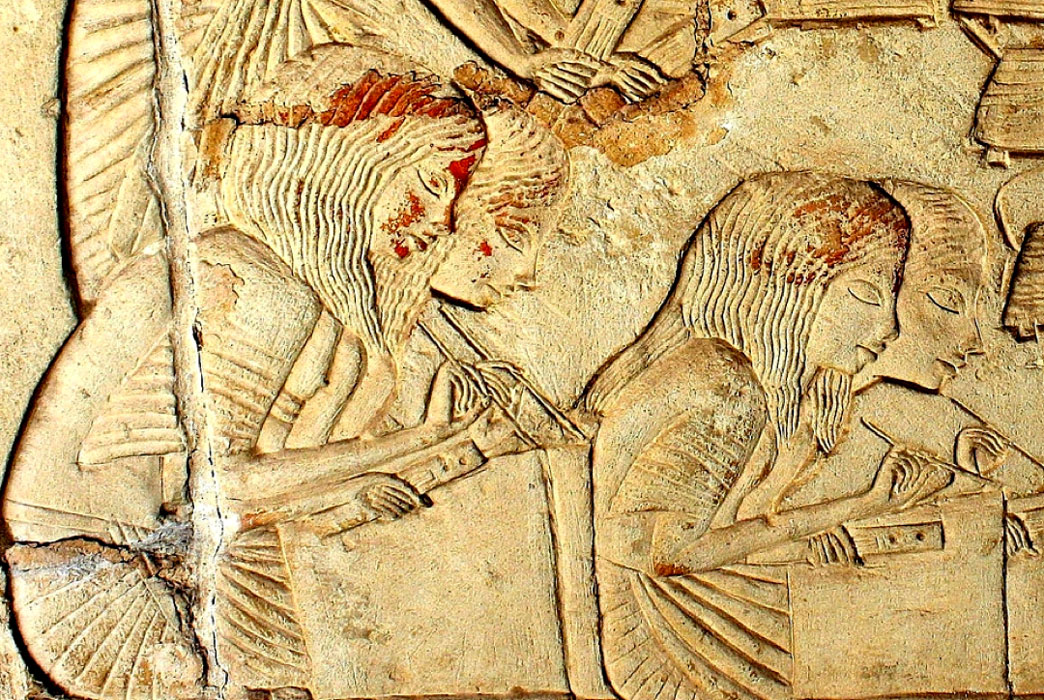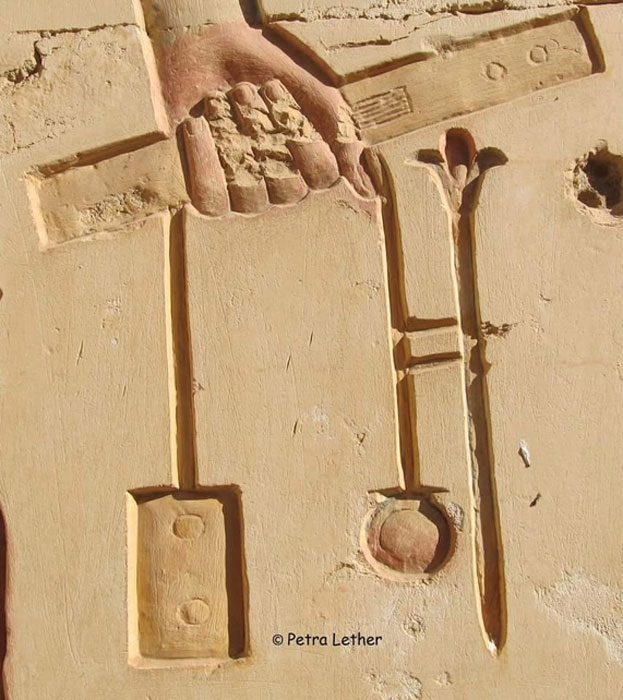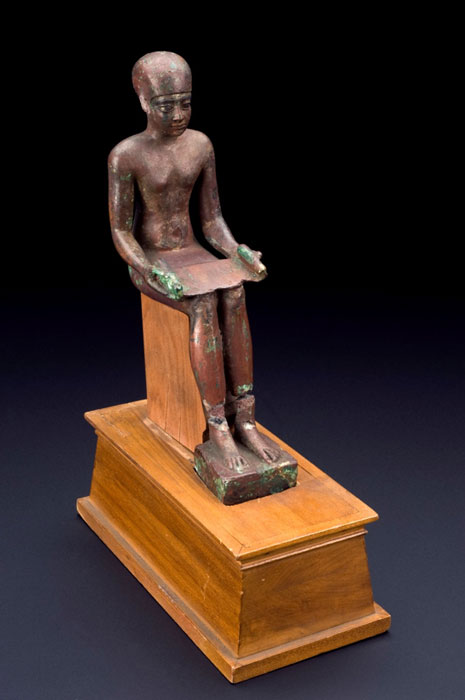
Scribes in Ancient Egypt: Custodians of the Voice and Words of the Divine – Part I
The rich scribal tradition of ancient Egypt was one of the foremost pillars of the development of that culture. At a time when much of the world could not read or write; these resourceful and erudite peoples wrote poetry, compiled the wisdom of the ages, designed grandiose monuments, and conducted robust diplomatic relations with kings in the Near East - all thanks to their love for, and command over the written word, which they referred to as Netjer Medu (Divine Writing). It is due in no small measure to the fact that they chronicled all aspects of their lives, royalty and commoner alike, that we know more about the Egyptians today than any other ancient civilization.

The hieroglyph used to signify the scribe, to write, and "writings", etc., is an Alan Gardiner sign from the category of 'writings, & music'. It contains the scribe's ink-mixing palette, a vertical case to hold writing-reeds, and a leather pouch to hold the black and red ink blocks. Close-up of a writing palette, Ramesses II temple, Abydos. Petra Lether.
Language of the Gods
For millennia, the strange writings on the walls of the magnificent temple and tomb walls in Egypt had befuddled observers; but all that changed in July 1799 when a young engineering officer, Pierre-François-Xavier Bouchard, made one of the most incredible finds in Egyptological, and indeed, world history: the Rosetta Stone. This large black granodiorite stele that was discovered at Fort Rashid in the Delta paved the way to unlock the mysterious hieroglyphics in 1822 - thanks to the singular diligence of the French scholar, Jean-Francois Champollion.
One of the earliest writing systems known to humankind, Egypt flourished due to its development and use of hieroglyphic, hieratic, and later, demotic scripts. Scribes were greatly esteemed in society as men who possessed godly wisdom, and their utterances were respected. In turn, these scribes ensured that they conducted their affairs with integrity, discipline and dedication, which ensured justice for everyone in the land and brought glory to the gods and Pharaoh. At least, that was the ideal that they collectively aspired to. Be they exquisite coffins, towering statues or grand temple walls; from simple ostraca to immense works of a religious, astronomical, medical, literary, economic and administrative nature - scribes in Egypt left their indelible mark in every conceivable sphere.

Seated bronze statuette of Imhotep (‘the one who comes in peace’); chancellor to the pharaoh Djoser, priest of Ra and architect. Egyptologists ascribe to him the design of the Step Pyramid at Saqqara. Outside the Egyptological community, he is referred to as a polymath, poet, judge, engineer, magician, scribe, astronomer, astrologer, and especially a physician. He later achieved the status of a deity and was identified with the Greek god Asklepios. (Public Domain)
Sacred writings of the ancient Egyptians consisted of a wealth of symbols that were organized in a mind-boggling array of combinations. But this was no meaningless or haphazard expression, for, each and every brilliantly colored pictorial depiction related to the highly abstract and spiritual relation between God and humankind. Netjer Medu was therefore a manifestation of both divine and temporal powers, right here on earth. Through their portrayal of bird and animal deities, heavenly beings, human anatomy and symbols of kingship; the ancients sought to replicate the magical realm of the Cosmos - and thereby, delve into and understand the deeper meanings of life.
- Zep Tepi and the Turin Royal Canon: Unanswered Mysteries in the Lists of Succession
- Ostraca: Voices from the Place of Truth—An intimate glimpse into New Kingdom Egypt
- Butehamun, Opener of the Gates to the Underworld: Dismantling Sacred Places of the Dead
“The Egyptians, by selecting 24 hieroglyphs for 24 different consonant sounds and adding others to represent clusters of consonants, approached an alphabet; but, lacking vowels, they never took the final step to alphabetical writing. Instead, they mingled the hieroglyphs that stood for sounds with the others that stood for ideas,” explains Lionel Casson.





